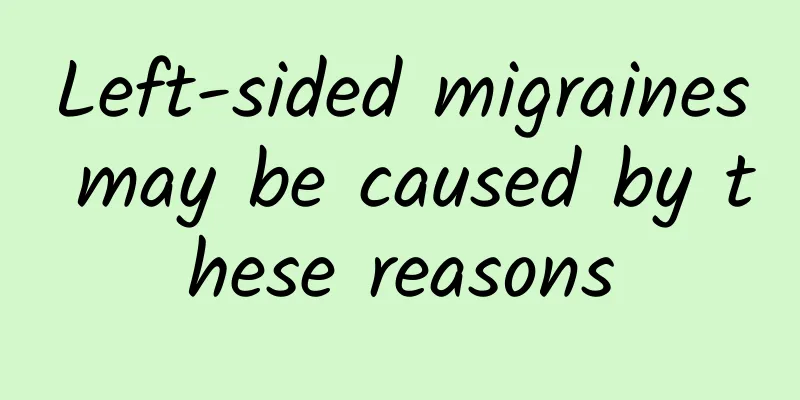Does proteinuria require renal puncture?

|
Renal biopsy is a common puncture method. Renal biopsy can identify the causes of some diseases and then provide symptomatic treatment. If proteinuria occurs, renal puncture is not necessarily required. Renal puncture is also a renal biopsy. We know that there are many types of kidney disease, and the etiology of the disease is very complex. The clinical manifestations are also different. Therefore, it is very important to make a clear diagnosis. What is renal puncture? Renal puncture renopuncture is a renal biopsy, also known as renal puncture biopsy. Due to the wide variety of kidney diseases and the complex causes and pathogenesis, the clinical manifestations of many kidney diseases are not completely consistent with the histological changes of the kidneys. For example, the clinical manifestation is nephrotic syndrome, and the pathology can present as various changes such as minimal lesions, mild lesions, mild mesangial proliferation, membranous nephropathy, membranoproliferative nephritis, focal segmental sclerosis, etc. The treatment plans and the development of the disease are also very different. Clinical significance ⑴ Clear diagnosis: Renal puncture biopsy can correct the clinical diagnosis of more than one-third of patients. ⑵Guiding treatment: Renal puncture biopsy can modify the clinical treatment plan of nearly one-third of patients. ⑶ Estimate prognosis: Renal puncture biopsy can more accurately evaluate the prognosis of patients with kidney disease. In addition, sometimes repeated renal pathology examinations are needed to understand the effectiveness of treatment or the progression of pathology (such as crescentic nephritis, lupus nephritis, and IgA nephropathy). In order to clarify the diagnosis, guide treatment or judge the prognosis, and when there are no contraindications to puncture, renal puncture can be performed for various primary, secondary and hereditary renal parenchymal diseases (especially diffuse lesions) in internal medicine. ⑴ Primary kidney disease: ① In case of acute nephritic syndrome, when renal function deteriorates sharply and rapidly progressive nephritis is suspected, puncture should be performed as soon as possible; if the condition does not improve after 2 to 3 months of treatment for acute nephritis, renal puncture should be performed. ② For primary nephrotic syndrome, treat first, and perform renal puncture when regular hormone treatment for 8 weeks is ineffective; or puncture first, and then provide different treatments according to the pathological type. ③ When the clinical diagnosis of asymptomatic hematuria and deformed red blood cell hematuria is unclear, and when the diagnosis of asymptomatic proteinuria and proteinuria persistently >1g/d is unclear, renal puncture examination should be performed. ⑵ Secondary or hereditary kidney disease: When clinical suspicion cannot be confirmed, or when clinical diagnosis has been confirmed, but renal pathological data are important for guiding treatment or judging prognosis, renal puncture should be performed. ⑶ Acute renal failure: When clinical and laboratory examinations cannot determine the cause, puncture should be performed promptly (including patients with chronic kidney disease whose renal function deteriorates rapidly). ⑷ Transplanted kidney: ① When the cause of renal function is significantly reduced and unclear, ② Severe rejection reaction determines whether the transplanted kidney should be removed; ③ It is suspected that the original kidney disease has recurred in the transplanted kidney. |
>>: What to do if proteinuria occurs after kidney transplantation
Recommend
Can gastrointestinal colds heal on their own?
Gastrointestinal colds are relatively common in l...
How to relieve itching caused by yam allergy
Yam is a plant that nourishes yin and kidney, str...
What are the effects of Titanium Crystal Pixiu?
The Pixiu is a mythical beast in our country. Bec...
Newborns poop more than 10 times a day
Since newborns mainly rely on breast milk or form...
Symptoms of gonorrhea
In recent years, gonorrhea has shown a clear incr...
Applying Asarum to the soles of feet to treat oral ulcers
Many people have experienced oral ulcers. In fact,...
Will children's teeth turn black?
If children do not pay attention to oral hygiene ...
What are the treatments for lumbar muscle strain?
The waist is a part that people are more concerne...
The effect of boiling coriander water with honey
In life, many people like to eat coriander. Every...
What causes headaches and eye pain?
Headache is a very common disease. Many people ha...
Why can water be squeezed out of the nipples when they are itchy?
Good health is the wish of most people, but in mod...
Who should not take Wulingsan?
Wuling San is a medicine used by many people in d...
What to do if your breast hurts after milk pumping
If a breastfeeding mother experiences breast pain...
A must-see for women! Have you taken this magic medicine today?
Women over a certain age are no strangers to Wu J...
Is small male genitalia hereditary?
The function of genitals is very important to us,...









